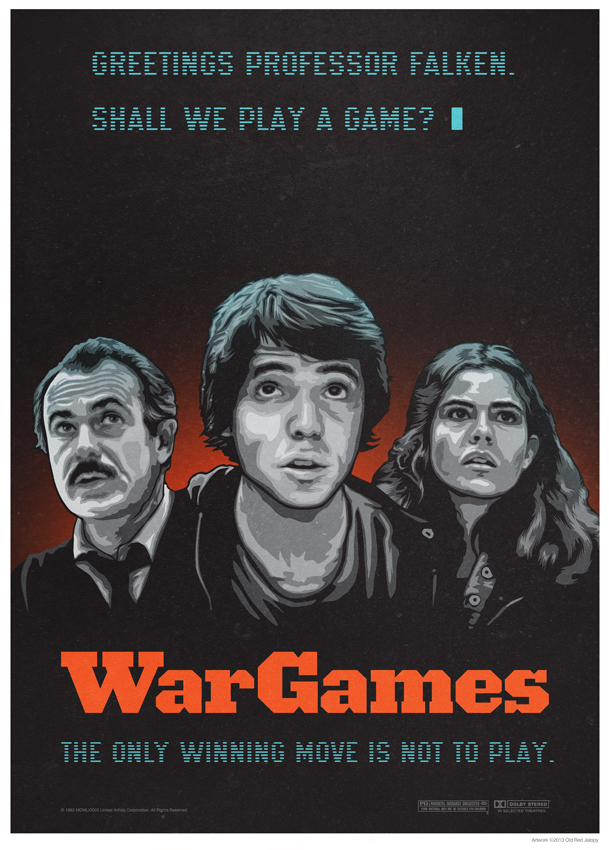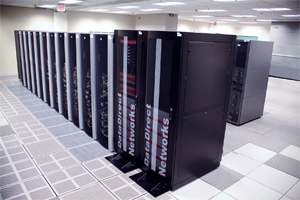Greg Harmon, of Dragonfly Capital, recently opened an investment blog post with an angle that caught my eye:
“Looking for that gift for the nerd that has everything? Well how about a supercomputer? These babies have the power of 50 million laptops. That should get them an edge playing Xbox against their friends.”
Harmon made a quick pivot and went on to pitch giving “the thrill of supercomputing” by making presents of supercomputer stock from companies, such as Cray.

However, to consider his initial idea a little farther, I imagine that nearly everyone who works here at the Ohio Supercomputer Center, and many of us in sister organizations at the Ohio Technology Consortium, have at one time or another pondered for a moment how awesome it would be to harness that power to play a favorite video game.

After all, who (in HPC nerdom, anyway) can forget the scene in the 1983 movie War Games, where a U.S. military supercomputer intent on waging thermonuclear war asks the precocious teenage hacker Daniel Lightman (played by Matthew Broderick), “Shall we play a game?” and later, “How about a nice game of chess?”
Ironically, just six years later, a real supercomputer, a 30-node IBM Deep Blue system, became the first machine to win a chess game under regular time controls against a reigning world champion, in this case Garry Kasparov. In 1989, the Russian Grandmaster had dispatched an earlier version of the system, Deep Thought.

In 2010, a research team led by Kent State University mathematician Morley Davidson, with help from colleagues in Germany, California and at Google, used a supercomputer to prove that the famous Rubik’s Cube puzzle, which can be “messed” up into more than 43 quintillion configurations, could always be solved in 20 moves or less. It would have taken the researchers more than 35 years to achieve the same mathematical solution using a desktop machine.
As the quest for Rubik’s Solution was just heating up in 2007, journalist Bobbie Johnson delivered a podcast that outlined his irritation at using such rare and expensive resources for “trivial issues,” such as the Rubik’s Cube research. A year before Johnson’s rant, a researcher at Northeastern University received a grant of computer time from the National Science Foundation for a project similar to Davidson’s. He justified his research by explaining that “what he learns about the cube could be applied to operations research problems with business applications, such as determining the most efficient way to move goods to consumers.”

Likewise, IBM’s Watson supercomputer, a cluster array of 2,880 processor cores, challenged some of the best players on television’s Jeopardy game show, and the computer soundly beat them. Just this summer, an IBM executive explained to writer Richard Byrne Reilly the company’s reasoning for investing major new resources in the system following the TV conquest: “With Watson, we’re using the $1 billion to help advance a new era of cognitive technology.” Watson uploads all sorts of information, such as data on medicine, physics, education, or healthcare, synthesizes the data, and responds with new information based upon what it learned.

Video-game technology has made a dramatic impact on supercomputing hardware. Supercomputers accelerated by graphics processing units (GPUs) had been rising in popularity when China’s Tianhe-1A burst onto the HPC scene in 2010, staking its claim to the fastest supercomputer on earth. Tianhe-1A leveraged “off the shelf” GPUs made by Nvidia, a manufacturer of graphics chips found in video-game consoles.

Now, the idea of leveraging computer gaming technology to advance scientific research is gaining momentum. In 2010, the Air Force built a supercomputer by interconnecting 1,760 Sony PlayStation 3 consoles. For a mere $2 million, they assembled a cluster core that performs 500 trillion floating point operations per second, which made it the fastest interactive computer in the entire U.S. Department of Defense. The Air Force designed it to enhance radar images, recognize patterns, process satellite images and study artificial intelligence – all specialized tasks that match the strengths of the game consoles’ GPU technology.
David Glowacki, a theoretical chemist from the United Kingdom, built a 5,000-processor cluster, added research-grade code, high-definition projectors and 3D cameras to create an energy avatar for people moving around in the molecular soup being displayed within the installation space. He is working to turn his simulation into a crowd-sourcing environment where people could “turn problems with molecular science into video games.”

For another example, closer to home, the next generation of surgeons — many who grew up playing video games — are using real-time, interactive computer simulations developed at OSC to learn delicate surgical techniques required for operations on the human skull. Called the Virtual Temporal Bone Project, the system was developed as a collaborative project between physicians and researchers at Nationwide Children’s Hospital, The Ohio State University Department of Otolaryngology and OSC’s Interface Lab. The lab is also working on a project that recreates the interior of Mammoth Cave in high-definition. The cave project leverages game engines to create an educational environment for geoscience students with mobility impairments.

Of course, one could worry that there may be some intrepid individuals who sneak some time on a supercomputer to simply play a video game. Most HPC centers, though, have a process in place to weed out projects that lack serious scientific merit. At the Ohio Supercomputer Center, for example, the Allocations Committee of the Statewide Users Group oversees a peer-review grant process that guarantees the State of Ohio that the research conducted at the center meets nationally recognized standards.
Compute time on these kinds of expensive systems may seem inexhaustible (OSC’s Oakley Cluster features 8,300+ Intel Xeon cores), yet demand meets or exceeds supply most of the time. Oakley was running above 90 percent utilization within weeks of startup when it was installed in 2012.

Finally, out of curiosity, I asked our Chief Systems Architect, Doug Johnson IF it could be done – could someone easily play video games using a supercomputer? After contemplating the somewhat absurd question, he started to list the obstacles, “Of course, our GPUs don’t have monitors or even output mechanisms for monitors, you’d have to have remote display via some network protocol, and ....” So, the question, it seems, is really only rhetorical.
Also, IBM’s Reilly admitted that using Watson doesn’t come cheap, with licensing fees reaching upward of a half-million dollars for unrestricted access. While the overall expense and size of supercomputers, based upon processing power, have decreased over the last 30 years, these amazing machines usually operate from a data center and parcel out their cycles to dozens or even hundreds of paying or subsidized customers. This was an important point that our investment advisor, Mr. Harmon, conveyed in his blog post – suggesting you buy your favorite nephew a supercomputer:
“There is a catch though. They tend to be a little expensive. Like above the Neiman Marcus catalog cost level. Oh, and they take up a bit of space.”



